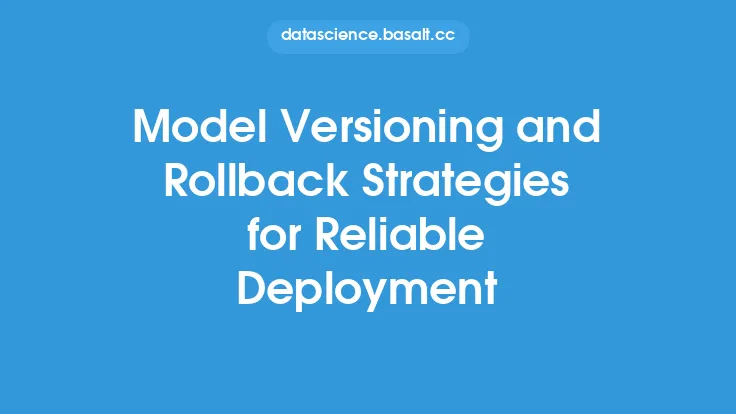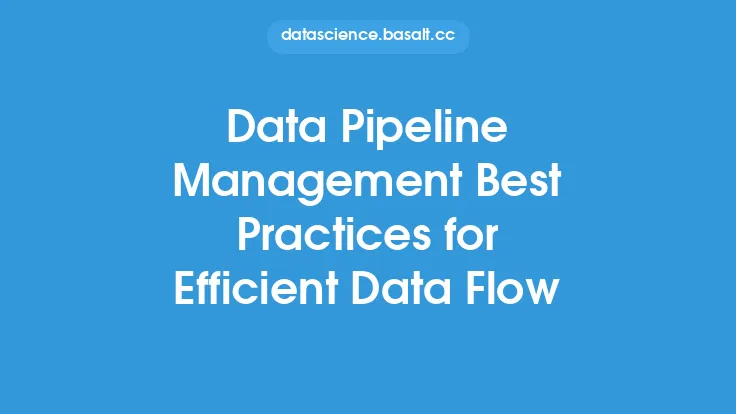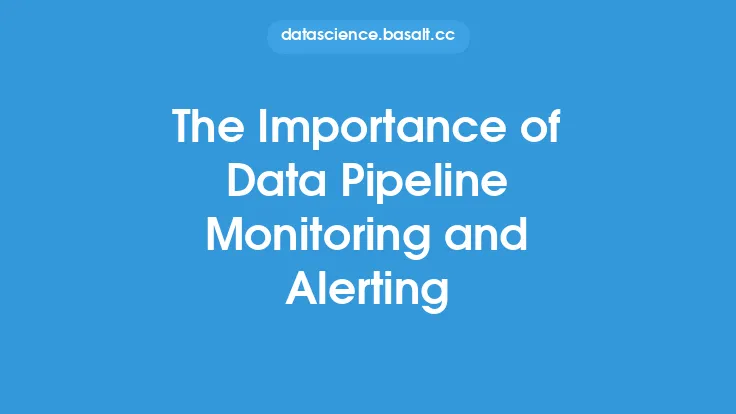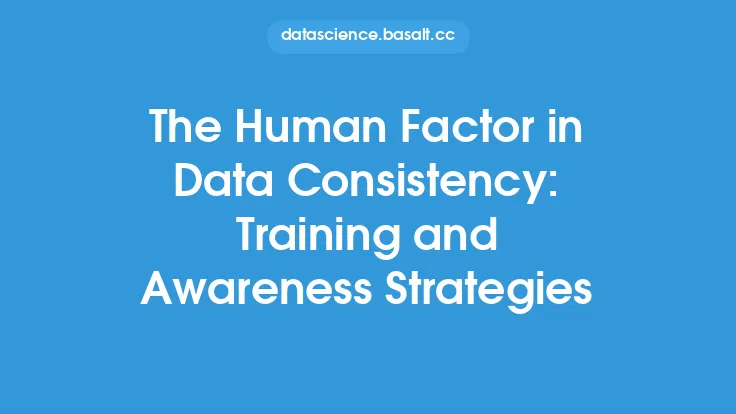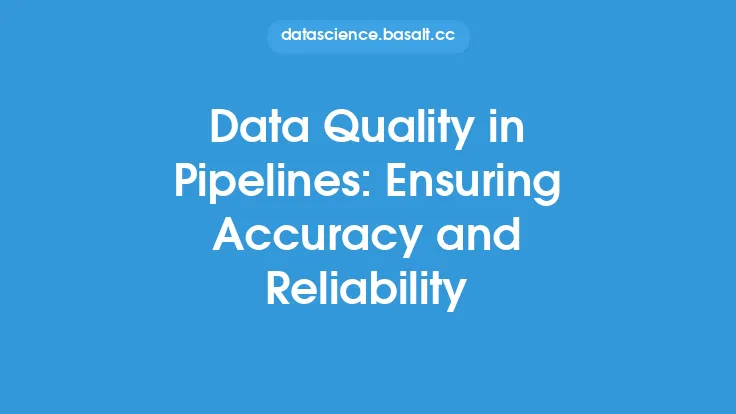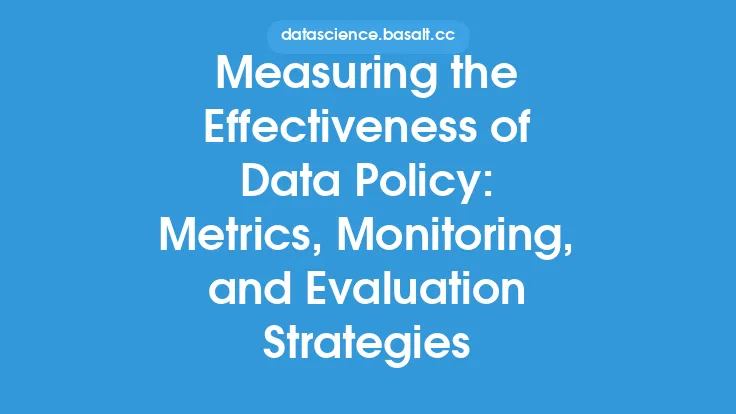Data pipelines are complex systems that involve multiple stages of data processing, from ingestion to transformation and loading. As data volumes and varieties continue to grow, managing changes to these pipelines becomes increasingly important. Versioning and change management are critical aspects of data pipeline management, ensuring that changes are tracked, validated, and deployed in a controlled manner. In this article, we will delve into the strategies and best practices for data pipeline versioning and change management.
Introduction to Versioning
Versioning is the process of assigning a unique identifier to each version of a data pipeline. This allows for tracking changes, comparing different versions, and rolling back to previous versions if needed. Versioning is essential in data pipeline management, as it enables data engineers to manage multiple versions of a pipeline, test new changes, and deploy them to production without affecting the existing pipeline. There are several versioning strategies, including semantic versioning, which uses a major-minor-patch numbering system to track changes.
Change Management Process
Change management is a systematic approach to managing changes to a data pipeline. It involves several stages, including planning, testing, validation, and deployment. The change management process typically starts with a request for change, which is then reviewed and approved by stakeholders. Once approved, the change is implemented, tested, and validated to ensure that it does not introduce any errors or affect the existing pipeline. Finally, the change is deployed to production, and the pipeline is monitored to ensure that it is working as expected.
Version Control Systems
Version control systems (VCS) are essential tools for managing changes to data pipelines. VCS, such as Git, allow multiple developers to collaborate on a project, track changes, and manage different versions of a pipeline. Git is a popular VCS that uses a distributed architecture, allowing developers to work on a local copy of the repository and then push changes to a remote repository. Other VCS, such as Apache Subversion and Mercurial, are also widely used in data pipeline management.
Branching and Merging
Branching and merging are critical concepts in version control systems. Branching allows developers to create a new version of a pipeline, make changes, and then merge the changes back into the main pipeline. There are several branching strategies, including feature branching, release branching, and hotfix branching. Feature branching involves creating a new branch for each feature, while release branching involves creating a new branch for each release. Hotfix branching involves creating a new branch to fix a critical issue in the production pipeline.
Continuous Integration and Continuous Deployment
Continuous integration (CI) and continuous deployment (CD) are practices that automate the testing, validation, and deployment of changes to a data pipeline. CI involves automatically building and testing the pipeline whenever a change is made, while CD involves automatically deploying the pipeline to production after it has been tested and validated. CI/CD pipelines can be implemented using tools such as Jenkins, Travis CI, and CircleCI.
Testing and Validation
Testing and validation are critical stages in the change management process. Testing involves verifying that the pipeline is working as expected, while validation involves verifying that the pipeline is producing the correct results. There are several types of testing, including unit testing, integration testing, and end-to-end testing. Unit testing involves testing individual components of the pipeline, while integration testing involves testing how the components interact with each other. End-to-end testing involves testing the entire pipeline, from ingestion to loading.
Deployment Strategies
Deployment strategies involve planning and executing the deployment of changes to a data pipeline. There are several deployment strategies, including big bang deployment, incremental deployment, and blue-green deployment. Big bang deployment involves deploying all changes at once, while incremental deployment involves deploying changes in small increments. Blue-green deployment involves deploying a new version of the pipeline alongside the existing pipeline and then switching to the new version once it has been tested and validated.
Rollback and Recovery
Rollback and recovery are critical aspects of change management. Rollback involves reverting to a previous version of the pipeline if a change introduces an error or affects the existing pipeline. Recovery involves restoring the pipeline to a previous state if a failure occurs during deployment. There are several rollback and recovery strategies, including snapshotting, backups, and versioning. Snapshotting involves taking a snapshot of the pipeline before deploying changes, while backups involve creating a backup of the pipeline before deploying changes.
Change Management Tools
Change management tools are essential for managing changes to data pipelines. There are several change management tools, including Apache Airflow, Apache Beam, and AWS Data Pipeline. Apache Airflow is a platform for programmatically defining, scheduling, and monitoring workflows, while Apache Beam is a unified programming model for both batch and streaming data processing. AWS Data Pipeline is a web service that makes it easy to process and move data between different AWS storage services.
Best Practices
There are several best practices for data pipeline versioning and change management. These include using version control systems, implementing continuous integration and continuous deployment, testing and validating changes, and deploying changes in a controlled manner. Additionally, it is essential to document changes, track changes, and monitor the pipeline for errors and issues. By following these best practices, data engineers can ensure that changes are managed effectively and that the pipeline is always working as expected.
Conclusion
Data pipeline versioning and change management are critical aspects of data pipeline management. By using version control systems, implementing continuous integration and continuous deployment, testing and validating changes, and deploying changes in a controlled manner, data engineers can ensure that changes are managed effectively and that the pipeline is always working as expected. Additionally, by following best practices and using change management tools, data engineers can streamline the change management process and reduce the risk of errors and issues. As data volumes and varieties continue to grow, effective versioning and change management will become increasingly important for ensuring the reliability, scalability, and performance of data pipelines.
